Where history sleeps
September 27, 2024, 7:45 am , by Richard Lutz
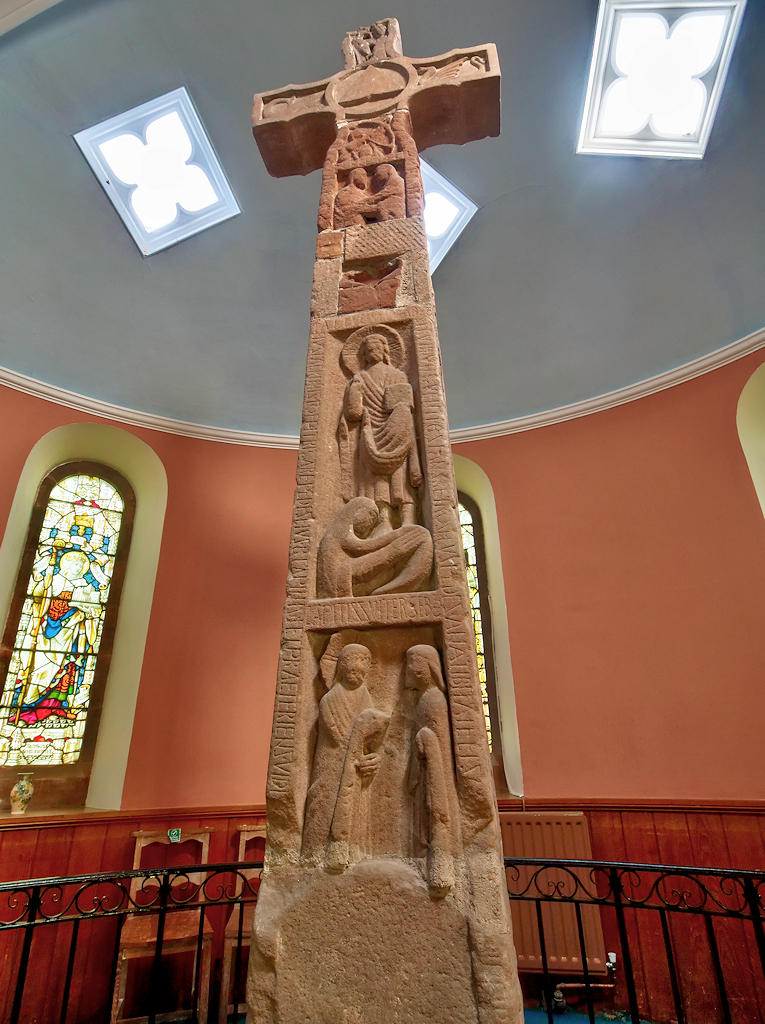
A sculptured gem lies in the backwaters of Britain, as Richard Lutz discovers.
I always get lost when hunting down Ruthwell Cross. It’s hidden among the twists of bumpy lanes that crisscross the Scottish lowlands.
It takes a question here, a pointed finger there, another look at a map, a sharp turn and then, peeking through sparse trees, is the church that houses a imposing monument from the Dark Ages.
The cross stands 18’ feet tall. So big that the church fathers, when they moved it inside, had to dig a well in the apse to accommodate its size. Historians call it ‘the finest example of Anglo Saxon sculpture’. Yet, its remoteness, its obscurity, make it a silent fragment of history unknown to most Britons, most Scots, possibly most local Dumfrieshire residents.
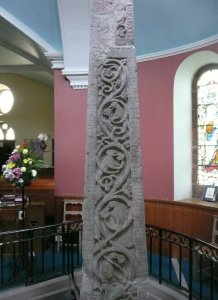

No one knows who created this 1400 year old decorated column, no one really knows if it was carved as a cross or simply as a towering pillar to attract 8thc wayfarers to learn about the Bible.
But what survives after years spent in the wind and lying forgotten in broken chunks is a hint of when this part of Britain was the Northumbrian kingdom, when the chronicler The Venerable Bede wrote his histories and Early Christians painstakingly completed their elaborate illustrated sacred texts.
The Ruthwell carvings remain remarkably unscathed. Most inscriptions are in Latin alongside the world’s earliest remains of an Old English verse. It’s carved in Runic script which looks like this:
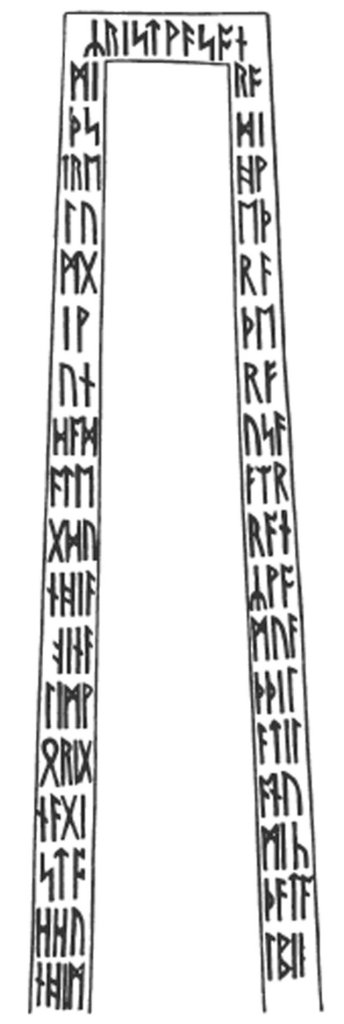
The illustration above picks out the archaic letters better than a photograph. It quotes remnants of a poem possibly copied from the early writing of the Church poet Caedmon. It’s not known if the runes, now a dead script, were inscribed when the column was finished or added later.
Some of the reliefs are simple, elegant, almost modern:
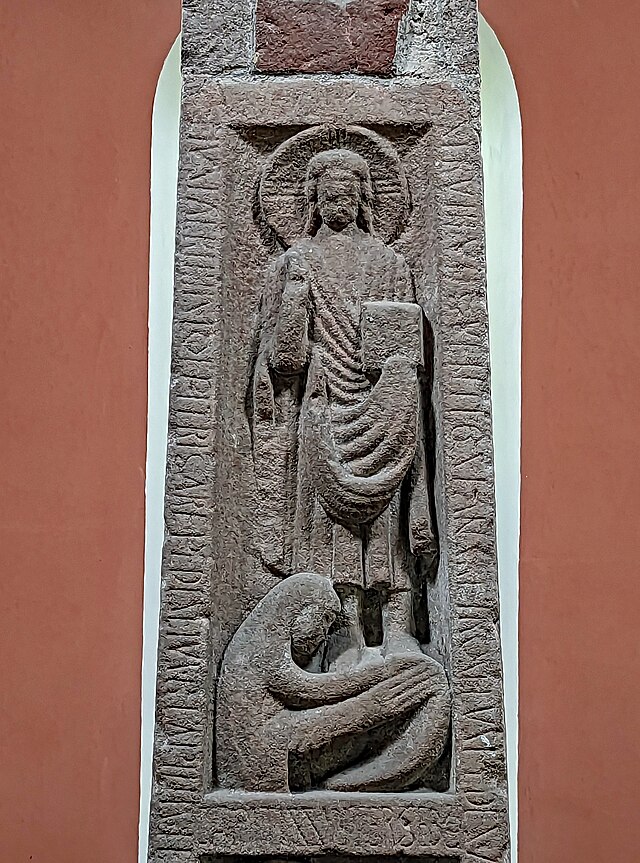
Jesus’s figure is a bit stiff. But Mary Magdalene’s body elegantly curves into the soft folds of her hair drying his feet. It could have been crafted by Henry Moore or Barbara Hepworth rather than a Dark Age stonemason. The sculptor from the early 700s must have been proud of that relief. Who knows, maybe the church fathers of that time felt it may not have been religious enough, too human, not enough rigid piety chipped into the stonework.
Some hated the masterpiece. In 1642, the Church of Scotland demanded the destruction of ‘idolatrous monuments.’ The pillar was smashed up, used as internal church benches and then buried in the old churchyard. It took an amateur historian, two hundred years ago, to put it back together and give it sanctuary in the present quiet church.
This web of history travels far. A strand heads 35 miles to the east- Ruthwell has a twin. The Bewcastle Cross soars outside a remote church in a lonely corner of Cumbria, high on the moorlands. It’s not been protected from wind and rain.
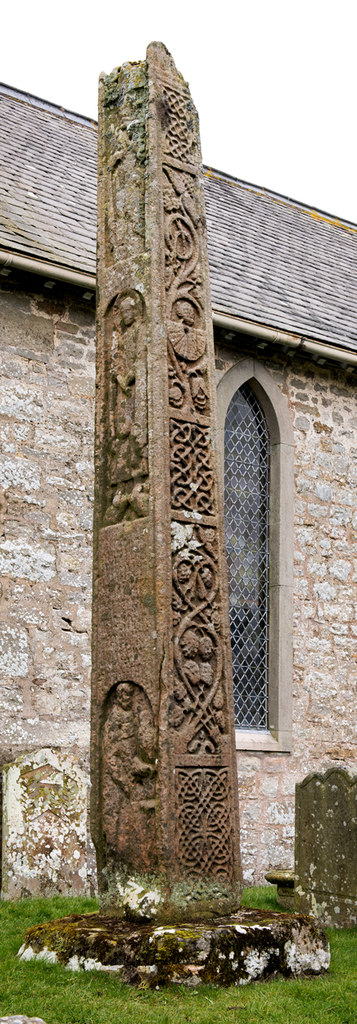
Were Ruthwell and this weathered twin sculpted by a single craftsman? Were they to be visited in tandem? Were they huge signposts linking thriving monasteries on the east coast of old England with the burgeoning island Christian sites dotted on the west coast of Scotland? Again…who knows?
Ruthwell has more questions than answers. It is where history sleeps, a small gem tangled in a web of little roads. It’s a fragment of stone, forgotten, bypassed, holding messages from Then to Now. More is unknown than known about this pillar. And intriguingly, that’s the way it will remain.
Photo credit: David Dixon, Humphrey Bolton, Carlisle Kid




EH24
delighted to see another of your posts , this one about posts
Will Travel
but who were they? Was this around the time of the long lost Picts or another period of history entirely?
Helen Shands
Interesting, to say the least
Agnes Day
Strangely I was unaware of the companion stone. Must visit it.
Nick Dent
A really interesting and beautifully written piece
Tasmin Greene
There’s so little written history – but symbols I suppose, carved in stone
J. Quresh
We cycled very close to the church last summer but was unaware of its significance-
Ed Burke
I remember when stopping there many years ago
Tom Garry
I’ll make a trip to see the one in Cumbria.
Alex D
the Savings Bank Museum is nearby
Ann Bank
really interesting.
Went down well with our coffee this morning.
Bella Houston
Durisdeer church also holds a hidden gem that you are likely aware of.
Subscribe to new posts.